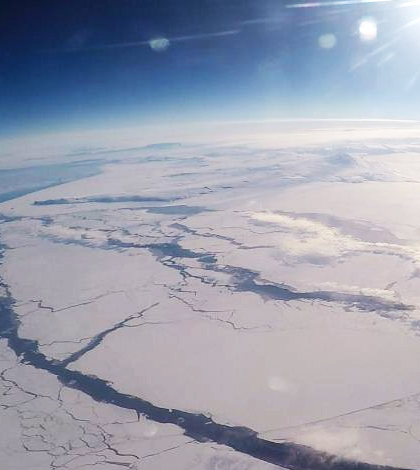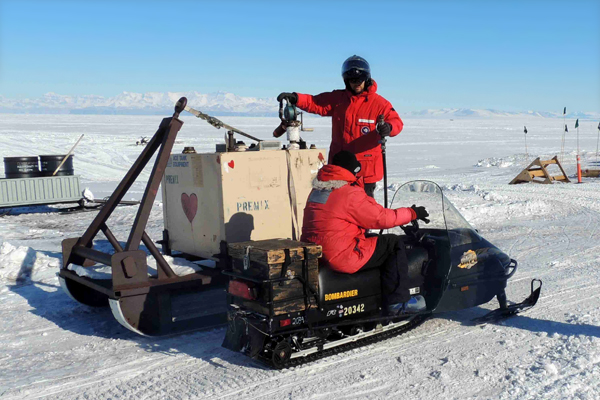Monitoring network to track Antarctic ice shelf vibrations, inform collapse predictions

After Antarctica’s Larsen B Ice Shelf collapsed in early 2002, satellite images taken before and after showed the massive expanse of ocean where the ice shelf once sat. And the event marked a major turning point for scientists working to combat sea-level rise.
One likely cause for the collapse was wave action impacting Larsen B. But many scientists say that climatic factors, like warmer atmospheric temperatures and more acidic oceans, also played a role.
With gaps in understanding that still exist a decade after the collapse, scientists with the Scripps Institution of Oceanography, UC San Diego and Woods Hole Oceanographic Institution are working to instrument the stable Ross Ice Shelf with seismometers to better understand the impacts of wave action on its stability. Learning how those waves impact the ice sheet will help scientists gauge the risk that others face, both in Antarctica and elsewhere.
“Keep in mind that Ross Ice Shelf is a floating mass of ice about 200 meters thick at the front of the ice shelf where wave impacts occur, generating vibrations at various frequencies that travel through the ice shelf,” said Peter Bromirski, research oceanographer at Scripps and the project’s lead investigator.

The team received snowmobile training to help them install sensors at stations up to 30 miles away. (Credit: Scripps Institution of Oceanography)
And even though Ross is a stable ice shelf, gathering data will be no pleasure cruise. Scientists will be camping there, sleeping in mountain tents, and working in large, Arctic Oven Tents. “Air temperature can be near zero or below,” said Bromirski. And “winds can be high, causing wind chill effects.” Most of the seismometers will have to be installed using snowmobiles, while other installations will need the help of a Twin Otter aircraft.
Nanometrics’ 120T PHQ broadband seismometers will be used in the seismic network, which should be up and running by the first week in December. The devices will store data they collect until researchers can get back to download the findings. Plans are to return to the ice shelf every November through 2016.
The data will be used to make initial measurements of the Ross Ice Shelf’s response to wave impacts. “Ocean waves impacting the front of the Ross Ice Shelf send vibrations through the ice shelf, much like the beating of a heart sends a detectable pulse throughout the body,” said Bromirski. “As with a pulse, these vibrations can be used to help assess the health – the stability and structural integrity – of the ice shelf.”
The speed of those vibrations, Bromirski says, is important. Since they travel faster through solid ice – much more so than the ocean swell and waves generating them – and slower through broken or fractured sections, they are good indicators of the ice sheet’s health.
The monitoring will also help inform management decisions relating to land ice and changing sea levels.
“Ice shelves (like Ross) buttress or restrain the movement of land ice to the sea,” said Bromirski. “When ice shelves collapse from thinning and weakening from rising temperatures above and below, the movement of land ice to the sea increases, accelerating sea level rise.”
Top image: Cracks in the Antarctic sea ice. (Credit: Scripps Institution of Oceanography)





0 comments